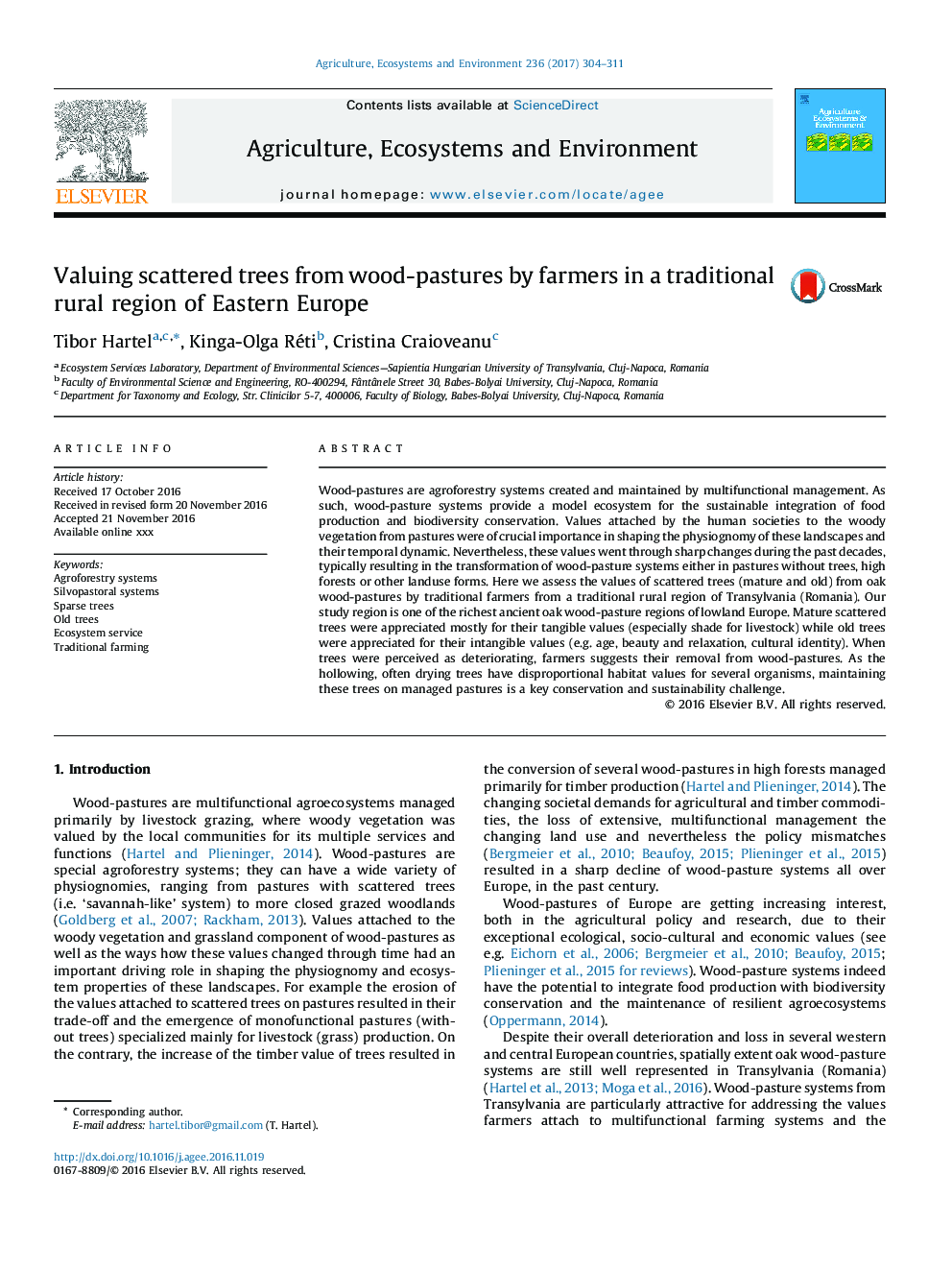| Article ID | Journal | Published Year | Pages | File Type |
|---|---|---|---|---|
| 5537899 | Agriculture, Ecosystems & Environment | 2017 | 8 Pages |
Abstract
Wood-pastures are agroforestry systems created and maintained by multifunctional management. As such, wood-pasture systems provide a model ecosystem for the sustainable integration of food production and biodiversity conservation. Values attached by the human societies to the woody vegetation from pastures were of crucial importance in shaping the physiognomy of these landscapes and their temporal dynamic. Nevertheless, these values went through sharp changes during the past decades, typically resulting in the transformation of wood-pasture systems either in pastures without trees, high forests or other landuse forms. Here we assess the values of scattered trees (mature and old) from oak wood-pastures by traditional farmers from a traditional rural region of Transylvania (Romania). Our study region is one of the richest ancient oak wood-pasture regions of lowland Europe. Mature scattered trees were appreciated mostly for their tangible values (especially shade for livestock) while old trees were appreciated for their intangible values (e.g. age, beauty and relaxation, cultural identity). When trees were perceived as deteriorating, farmers suggests their removal from wood-pastures. As the hollowing, often drying trees have disproportional habitat values for several organisms, maintaining these trees on managed pastures is a key conservation and sustainability challenge.
Related Topics
Life Sciences
Agricultural and Biological Sciences
Agronomy and Crop Science
Authors
Tibor Hartel, Kinga-Olga Réti, Cristina Craioveanu,
